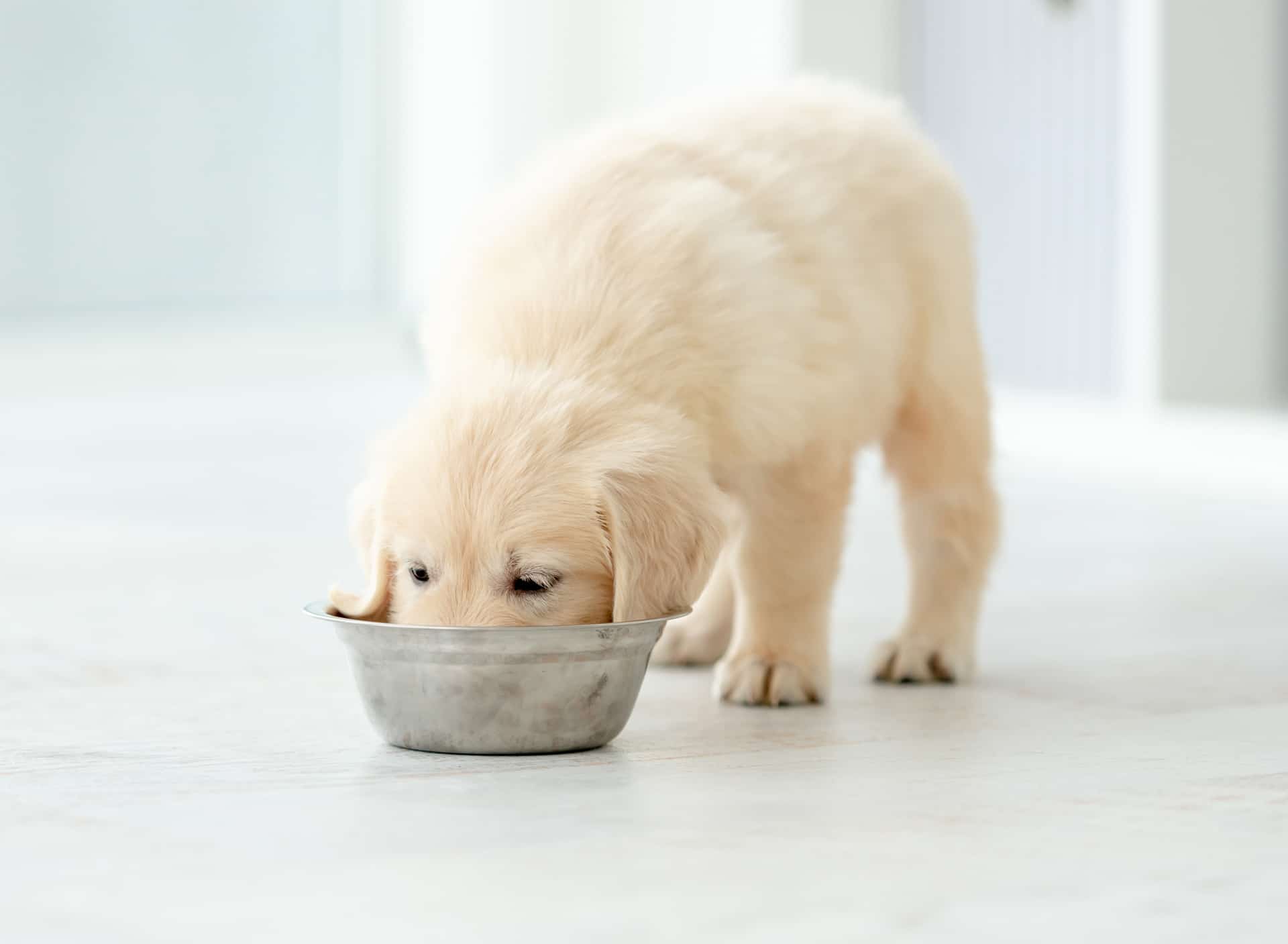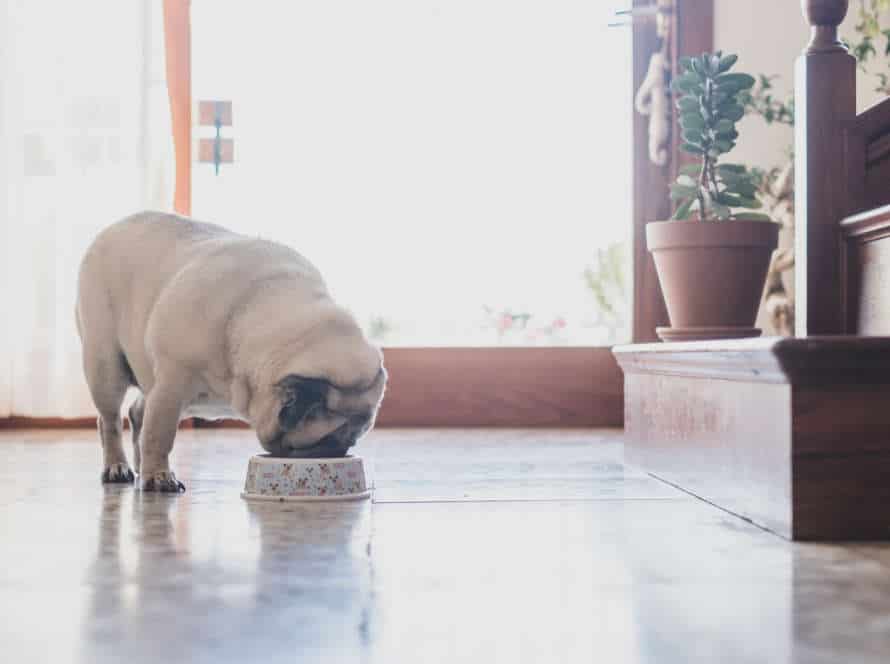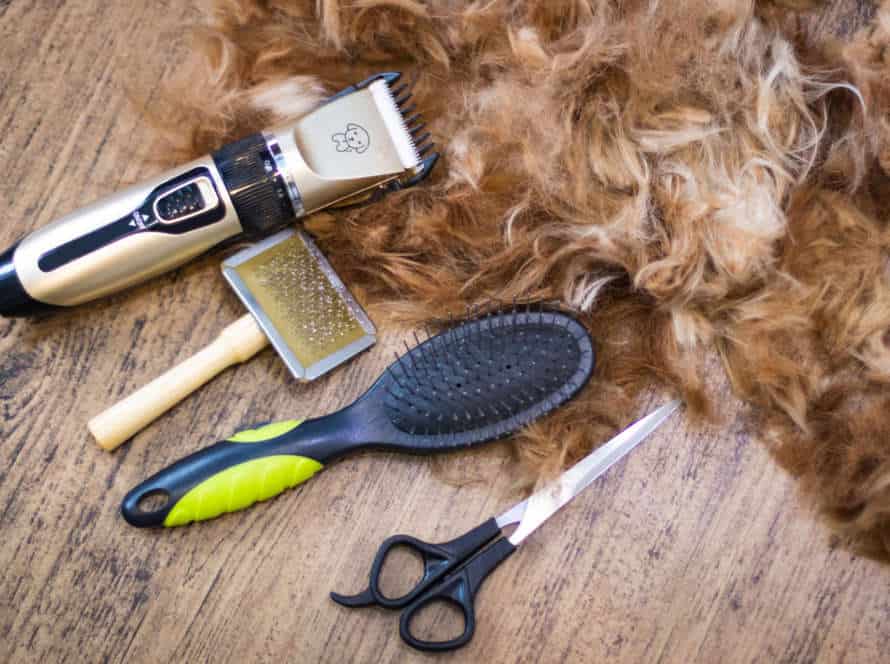Feeding Your Puppy Right: A Guide to Optimal Nutrition
Ensuring your pup is getting the right food and enough of it is essential for its growth and health. Let’s explore how to nourish your pup optimally.
- Pick a high quality puppy food that has the correct mix of protein, fat, and carbs. Prefer brands with real meat as the main ingredient and keep away from those with fillers like corn and soy.
- Talk to your vet to find out how much food your pup needs based on its breed, age, and activity level. Overfeeding can result in obesity which can cause long-term problems for your pup.
- Create a feeding routine. Feed your pup at the same time and in the same spot every day.
- Keep an eye on your pup’s weight and adjust their food intake accordingly. If your pup is always hungry, it’s time to increase their portion size.
- Provide clean, fresh water to your pup and avoid giving them leftovers or human food, which can disturb their digestion and cause nutritional imbalances.
Understanding your Puppy’s Nutritional Requirements
Feeding your pup correctly is essential to ensure its life is happy and healthy. A balanced diet is super important for its growth and development. Knowing its nutritional needs is a must, so it gets the right nutrients. Here are some tips to help you feed the pup correctly!
Identify your puppy’s breed and size
Knowing your pup’s breed and size is essential for selecting the ideal puppy food and feeding them the right amount for optimal nutrition. Here are the steps:
- Find out the breed of your pup – Every breed of dog has different dietary needs due to their one-of-a-kind body shape and metabolism. For instance, large breed puppies grow fast and need a diet that is properly balanced in calcium and phosphorus to assist their bone growth without overworking them.
- Establish the size of your pup – The size of your pup relates to their nutritional requirements too. Small and toy breed dogs need kibble that is easy to digest and small enough for their miniature jaws.
- Consult with your vet – Your vet can help you decide on the right type of diet for your pup’s breed and size, based on their overall health and dietary needs.
Pro tip – Remember to take a look at the nutrient content list of dog food to pick the best kind of dog food for your pup, as some dog food brands come with added preservatives which could be damaging to your pup in the long run.
Determine your puppy’s age and activity level
Determining your pup’s age and activity is vital to giving them optimal nutrition.
Age: Puppies need different nutrition, depending on their stage of development. Those under 6 months need more protein, fat, and calories for growth. Adults need food to keep them at a healthy weight.
Activity level: An active pup needs more calories than one that naps all day. Make sure you’re feeding your pup enough for their activity.
To determine how much to feed:
- Talk to your vet about age and nutritional needs.
- Get a high quality food that meets their needs and activity.
- Weigh and measure your pup regularly.
- Don’t overfeed – it can lead to health problems.
- Pro tip: Give them fresh water with meals for proper hydration.
Know the difference between essential and non-essential nutrients
Understanding the difference between essential and non-essential nutrients is vital for meeting your pup’s dietary needs.
Essential nutrients are ones they cannot make themselves and need to get from their diet. These include amino acids, vitamins, minerals, and fatty acids.
Non-essential nutrients can be produced by the body and don’t need to be acquired from food. Examples are carbohydrates and some amino acids.
It’s important to give your puppy a balanced diet with all the essential nutrients they need. Consult a vet or veterinary nutritionist to design the best diet for your puppy’s breed, age, and activity level.
Types of Dog Food
Choosing the right dog food is essential for your pup’s health! There are several options: kibble, wet food, raw food, homemade meals and more. Each has its own advantages and disadvantages. Knowing what food is best for your pup is necessary to make sure they develop strong and healthy.
Let’s explore the different types of dog food!
Dry kibble
Dry kibble is a type of pup food that comes in the form of small, hard pellets. This type of meal is becoming popular as it’s convenient, reasonably priced, and easy to store. There are various types of dry kibble for your pup:
- Puppy kibble: Formulated for puppies with higher levels of protein and fat for their growth.
- Adult kibble: For adult doggos with lower levels of protein and fat for their weight and health.
- Senior kibble: Designed for older pooches with fewer calories to prevent weight gain and health issues.
- Grain-free kibble: No grains like wheat, corn, or soy – perfect for dogs with allergies or sensitivities.
Pro tip: Read the label and choose a high-quality brand that suits their nutritional needs.
Wet/Canned food
Wet or canned food can be a great pick for your pup’s optimal nutrition. Here are some benefits:
- Better hydration – Wet or canned food has high moisture content, perfect for hot weather.
- Higher protein – Wet food usually has higher protein content than dry food, great for active pups.
- Essential nutrients – Wet food is formulated with balanced and complete nutrients for a healthy diet.
Consider these wet food options for your pup: Blue Buffalo Homestyle Recipe Puppy Dinner, Hill’s Science Diet Puppy Chicken & Beef Entrees, Royal Canin Canine Health Nutrition Puppy Canned Food. Pro Tip: Ask your vet which wet or canned food is best for your pup based on their needs and health.
Semi-Moist food
Semi-moist food is an option for pup owners. It’s between dry and wet food, but chewier. It has more moisture than dry food, but not as much as wet.
Benefits of semi-moist food:
- Tastier than dry food
- Longer shelf life than wet food
- Easy to serve
Drawbacks of semi-moist food:
- May contain extra sugar and salt
- Can be pricier than dry food
- Not good for dogs with dietary needs
Always talk to your vet before selecting any type of dog food, including semi-moist. It’s important to make sure your pup is getting enough nutrition.
Understanding Dog Food Labeling
Time for pupper food shopping? Labels on Canine Chow bags can be confusing. Knowing what each label means and what ingredients are inside helps you make sure your pup’s needs are met. Let’s take a peek at dog food labeling basics. How to interpret each label? Here’s the scoop!
Recognize the different components present on the label
Daunting task? Not anymore! With knowledge of label components, picking the right food for your pup is a breeze.
- Name of food – tells you the type, and quality of ingredients used.
- Guaranteed analysis – lists percentage of crude protein, fat, fiber, and moisture.
- Ingredient list – shows all ingredients, with highest percentage first. Look for quality sources of protein, like meat or fish. Avoid fillers like corn and wheat gluten.
- Nutritional adequacy statement – if it’s complete and balanced, it contains essential nutrients.
- Feeding guidelines – how much to feed based on pup’s weight and age.
Informed decisions = happy, healthy pup!
Note the importance of verifying protein sources
As a dog owner, it is essential to understand the value of verifying the protein sources in your pup’s food. The quality and source of protein are vital elements that influence your dog’s wellbeing.
Why?
Low-grade proteins from plants or by-products lack the essential amino acids that dogs need. This can lead to stunted growth, muscle wasting, and other health issues. Chicken, lamb, and beef are high-grade meats, providing better digestibility and bioavailability. Meat meals or by-products are not suggested, as they could contain parts of animals of lesser quality.
It is necessary to search for particular named sources of proteins on the food label. Examples are “whole chicken” and “lamb meal“. Avoid ambiguous terms such as “meat” or “animal by-products.” This will guarantee your pet is receiving the best source of protein for their optimal nutrition and health.
Identify the ingredients that should be avoided
When picking out dog food, it’s important to be aware of what’s listed on the label. Certain ingredients can be bad for your pup’s health. Here are some to avoid:
- Meat by-products – these low-quality animal parts, like beaks, feet, and organs, are not meant for human consumption.
- Artificial preservatives – BHA, BHT, and ethoxyquin are added to make the food last longer. Sadly, they can cause cancer and other health problems.
- Corn – this is a cheap filler with no nutritional value. It’s also tough for dogs to digest.
- Soy – another filler that can lead to digestion issues and allergies.
- Meat meal – this concentrated form of meat can come from any animal, including sick ones. It’s tough to tell what kind of meat it is and where it’s from.
Be sure to read the ingredient list on your pup’s food and avoid the harmful stuff. This way, your furry friend gets the best nutrition.
Homemade Dog Food
Pet owners who seek something else than commercial dog food can opt for homemade. Knowing your pup’s nutrition requirements and the right ingredients is needed. Let’s explore the basics of making homemade dog food. This includes components, tools and techniques.
Advantages of making dog food at home
Making homemade dog food has its advantages compared to store-bought food. You can keep an eye on what your pet consumes and make sure they are getting proper nutrition.
Here are some reasons why homemade dog food is so beneficial:
- Personalize it: Create a food plan according to your pup’s needs or wants. You can also make adjustments if needed.
- No Preservatives: Store-bought food usually has preservatives to prolong shelf life. This can make it less fresh and nutritious.
- Cost-Friendly: Making the food yourself can be cheaper in the long run. Get the ingredients in bulk and store them properly.
- Fewer Allergy Reactions: By controlling what goes into the food, you can stop allergies and digestive issues caused by additives in store-bought food.
Potential risks of cooking homemade dog food
Cooking homemade dog food may appear healthy and cost-saving. But, it comes with potential risks. Here’s an overview of them:
- Nutrient Deficiencies: Homemade food may lack vital nutrients that commercial dog food provides. This can lead to vitamin or mineral deficiencies and malnutrition.
- Unbalanced Diet: Getting the right balance of protein, fat, and carbs with homemade food is tricky.
- Contaminants: Homemade ingredients may contain bacteria, parasites, or toxins, making your pup sick.
- Overfeeding: Homemade could contain too many calories and fat, leading to obesity or other health issues.
It’s best to consult a vet before switching to homemade meals for your pooch. That way, all his nutritional needs will be met.
Creating a balanced homemade dog food meal
For furry friends to stay healthy, a balanced homemade dog food meal is key. Here are some tips to make sure pup’s meals are well-rounded:
- Protein source – such as meat, fish, or poultry.
- Vitamins & minerals – cooked carrots, broccoli, or sweet potato.
- Carbohydrates – like rice or oats for energy.
- Healthy fats – like olive oil or fish oil.
- Dangerous ingredients – steer clear of chocolate, onions, garlic, and grapes.
- Vet visit – ask about portion sizes and dietary restrictions, especially if pup has health conditions.
Pro Tip: Spice up pup’s diet with herbs and spices, like parsley and turmeric. Skip the salt and sugar though!
Supplements for Puppies
Puppy nutrition? Supplements are a must! They offer essential vitamins and minerals, which are great for pup wellbeing. What kind of supplements should you give? Let’s discuss that, plus the advantages of giving them.
Omega-3 and Omega-6 Supplements
Omega-3 and Omega-6 supplements can be great for puppies! When taken in the correct dosage, they help keep the puppy’s coat healthy and reduce inflammation. Here are some tips to bear in mind when feeding your pup these supplements:
- Be cautious of dosage – too much could lead to bleeding and affect blood clotting.
- Choose a supplement that is purified and meets international standards.
- Opt for natural sources like fish oil.
- Consult a vet to figure out the proper amount for your pup based on their age, size, and breed.
Pro Tip: Supplements should not be used instead of a balanced diet. Pick the right one for your furry friend that fits into their diet.
Probiotics and Digestive Enzymes
Probiotics and digestive enzymes are must-have supplements for puppies! Probiotics are live bacteria that happen naturally in digestion and help digestion, while digestive enzymes are proteins that break food down for easier digestion. Here are the amazing benefits:
Probiotics:
- Balance gut bacteria
- Boost immunity
- Aid nutrient digestion and absorption
- Lower the chance of digestive problems.
Digestive Enzymes:
- Promote healthy digestion
- Increase absorption of nutrients
- Reduce inflammation in digestion
- Help waste be eliminated.
To make sure your pup gets the right amount of probiotics and digestive enzymes, talk to a vet about the best supplements for them.
Calcium and Vitamin D supplements
Calcium and Vitamin D are both necessary for puppies to grow and develop properly. But be mindful when supplementing their diet; always talk to a vet first.
Remember these tips:
- Puppy food should include the right amounts of calcium and vitamin D for your pup’s breed and size.
- Too much calcium and vitamin D can cause health issues like bone issues and kidney damage.
- If you think your pup needs extra calcium and Vitamin D, ask your vet and follow the dosage instructions.
- Choose supplements for puppies and make sure they’re safe and of good quality.
- Don’t forget that the best nutrition for your puppy is a balanced diet and enough exercise.
Common Feeding Issues
Feeding puppies can be a tough but satisfying job. They have lots of food needs, but it’s our duty to make sure they get what they need in the best way. We’ll go through some of the most common puppy food issues, and look at how to handle them the best.
Overfeeding your puppy
Don’t overfeed your puppy! It can cause serious health problems. Your pup needs the right nutrition to grow up healthy. Here are some feeding mistakes to avoid:
- Don't give too much food. Puppies have small stomachs and can’t have too much. Too much can lead to obesity, which causes diabetes, joint problems, and heart disease.
- Don’t feed table scraps. Human food isn’t always good or safe for dogs. Some foods are even toxic and can cause digestive issues. Stick to high-quality puppy food.
- Have a consistent feeding schedule. This helps with digestion and prevents overeating. Stick to the same times for feeding your puppy.
By following these guidelines, you will help your pup get the nutrition they need!
Feeding your puppy table scraps
It’s not a great idea to give your puppy table scraps. They’re usually loaded with calories, salt and fat, which can cause weight gain and digestive problems. Plus, they might not give your puppy the nutrients they need. For a healthy pup, give them food specifically designed for puppies. If you want to treat them, go for healthier options like carrots, green beans or lean meat. Make sure to talk to your vet about your pup’s diet.
Addressing picky eaters
Dealing with picky eaters can be a difficult task for dog owners. Here are some advice to help:
- Be consistent with their meal times.
- Vary their food brand or flavor.
- No human food or table scraps should be fed.
- Mix wet food, broth or water with dry kibble.
- Give treats rarely, so they don’t lose their appetite.
- Be aware that some dogs are just picky eaters. If you’re worried, see a vet.
Pro Tip: Always buy high-quality food for your pup’s best nutrition.
Conclusion: The Importance of a Balanced Canine Diet
To sum up, a balanced diet is key for a puppy’s growth and wellness. Giving your pup the right nutrition ensures they get all the vitamins, minerals, and nutrients they need.
Remember:
- Dogs need a mixed diet of proteins, carbs, fats, vitamins and minerals to stay healthy.
- Always check with your vet if you have any worries about your pup’s nutrition or health.
- Don’t feed your puppy table scraps or human food; it can lead to digestive issues and extra weight.
- Choose high-quality commercial dog food brands that meet your pup’s nutritional requirements and don’t have fillers or artificial additives.
By giving your puppy a balanced diet, you’re providing them with a strong foundation for a long and healthy life.
Frequently Asked Questions
1. What is the best type of food to feed my puppy?
The best type of food to feed your puppy is a high-quality, commercially available puppy food that meets all of their nutritional needs. Look for foods that are specifically labeled as “puppy food” and meet AAFCO (Association of American Feed Control Officials) standards.
2. How much food should I be feeding my puppy?
There is no one-size-fits-all answer to this question, as the appropriate amount of food to feed your puppy depends on their breed, age, weight, and activity level. To determine the appropriate amount, consult with your veterinarian or follow the recommended feeding guidelines on the puppy food packaging.
3. Can I feed my puppy table scraps or human food?
While it may be tempting to share your human food with your puppy, it is generally not recommended. Table scraps and human food may not provide the necessary nutrients that your puppy needs and may even be harmful to their health. Stick to high-quality puppy food for optimal nutrition.
4. When should I switch my puppy from puppy food to adult food?
The appropriate time to switch your puppy from puppy food to adult food depends on their breed and size. Small and medium-sized dogs can typically switch to adult food at around 12 months of age, while larger breeds may need to stay on puppy food until 18-24 months of age. Consult with your veterinarian for specific guidance.
5. Should I be giving my puppy supplements?
If you are feeding your puppy a high-quality, commercially available puppy food, they should be receiving all of the necessary nutrients for optimal health. Most puppies do not require additional supplements. However, if you have concerns about your puppy’s health, consult with your veterinarian.
6. How often should I be feeding my puppy?
Puppies require more frequent feeding than adult dogs. Most puppies should be fed three to four small meals per day until they are about six months old, at which point you can reduce this to two meals per day. Again, consult with your veterinarian or follow the feeding guidelines on your puppy food packaging for specific guidance.







